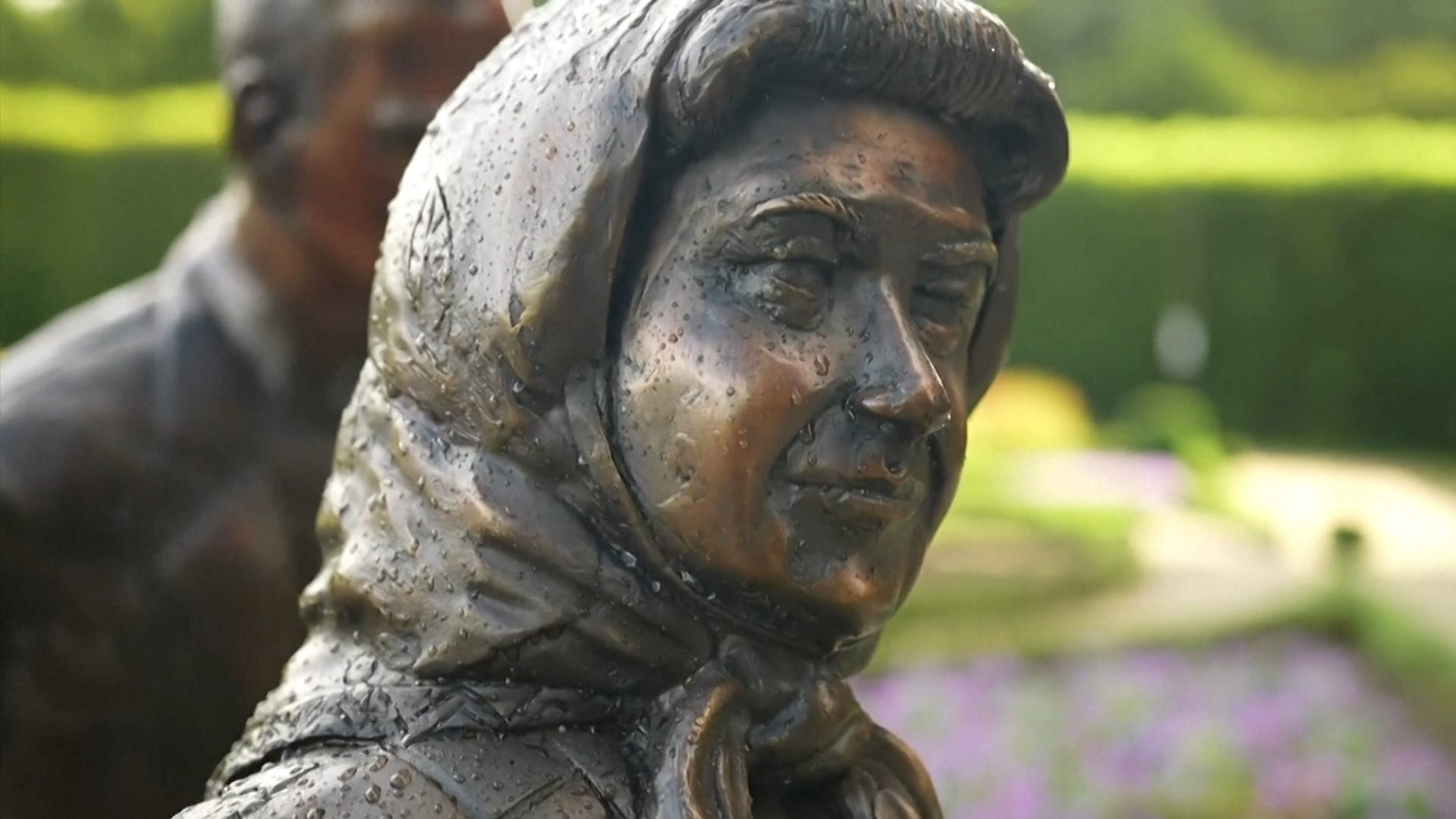“The Queen and Her Presidents” dissects the British monarch’s relationship with the 13 U.S. presidents she met during her time on the throne.

Queen Elizabeth II statue stirs debate over resemblance
A sculpture of Queen Elizabeth Il has sparked a debate over whether it resembles the late queen or not.
WASHINGTON – She wasn’t just a woman in a colorful hat. And American presidents knew it.
Britain’s Queen Elizabeth II, whose 70-year reign made her the nation’s longest-ruling monarch, met 13 sitting U.S. presidents over her lifetime, more than any other American or foreign head of state.
Though routinely underestimated and her influence discounted, the queen was a persuasive global leader who helped shape – and was sometimes shaped by – her partners in the Oval Office, said veteran journalist Susan Page, the author of a forthcoming book on the unique relationship between Queen Elizabeth and American presidents.
The queen was a skilled diplomat – “really, one of the world’s great diplomats, and always with the interests of Great Britain in mind – and also the Commonwealth and some larger world issues,” said Page, USA TODAY’s Washington bureau chief.
“That aspect of her legacy has been underestimated.”
The book, titled “The Queen and Her Presidents,” will be published by HarperCollins on April 14, 2026, just days before the 100th anniversary of the queen’s birth. It will chronicle her transformation from a shy, anxious princess to a powerful and persuasive leader and will provide candid assessments of America’s commanders-in-chief. It’s available for preorder on Amazon.
At the start of her reign, Queen Elizabeth, then 25, got some crucial advice from her mentor, Winston Churchill, who told her to “stay close to the Americans.”
She did.
From Dwight Eisenhower to Joe Biden, Elizabeth met every American president in office during her reign, except Lyndon Johnson. (In 1951, when she was still a princess, she also met Harry Truman when she visited the United States on behalf of her ailing father, King George VI.)
Page’s book will detail Elizabeth’s bond with American leaders, including the speculation and the reality surrounding her relationship with Donald Trump; her unexpected and genuine connection with Barack Obama – and her surprising admission to him; and her influential friendship with Ronald Reagan during the Cold War, which was built on their shared love of horses and their conflict with Britain’s then-Prime Minister Margaret Thatcher.
In addition, the book will look at the queen’s close cooperation with John F. Kennedy and at how Richard Nixon sought her help during Watergate – and even wanted to make her a relative.
In researching the project, Page interviewed three American presidents (Trump, Obama and Bill Clinton), three prime ministers (Boris Johnson, David Cameron and Liz Truss) and two first ladies (Michelle Obama and Hillary Clinton). She also visited eight presidential libraries and interviewed secretaries of state, foreign secretaries, ambassadors, protocol chiefs and historians.
Page, who also has written biographies of former first lady Barbara Bush, former House Speaker Nancy Pelosi and journalist Barbara Walters, sees a common thread between Elizabeth and the other three women that might not be obvious.
All four are from roughly the same generation and rose to prominence even though there had been no expectation that they would lead momentous lives, she said.
Yet, “all four of these women ended up having these big, consequential lives that had an impact on what happened in the world and what happened around them,” Page said.
When Elizabeth was born, her uncle, Edward VIII, was expected to become king. He did, but he abdicated less than a year later so he could marry Wallis Simpson, an American. His decision to step down not only meant that Elizabeth’s father would become king, but it also opened the door for her own eventual ascendancy to the throne.
Until then, “there was not a thought that she was going to be the queen,” Page said.
Elizabeth, who died in 2022, witnessed the highs and lows of the alliance between the United States and the United Kingdom, from the Suez crisis in 1956 to Brexit six decades later. A practitioner of deft diplomacy, she skillfully navigated her role on the world stage and managed to avoid any public spats with the prime ministers who served under her reign.
“That was not her style,” Page said. “She very much operated behind the scenes.”
Which is probably why many Americans and people all over the world remember her not as the powerful world leader she was, but simply as a stoic woman in a tiara – and colorful hats.
Follow Michael Collins on X @mcollinsNEWS.